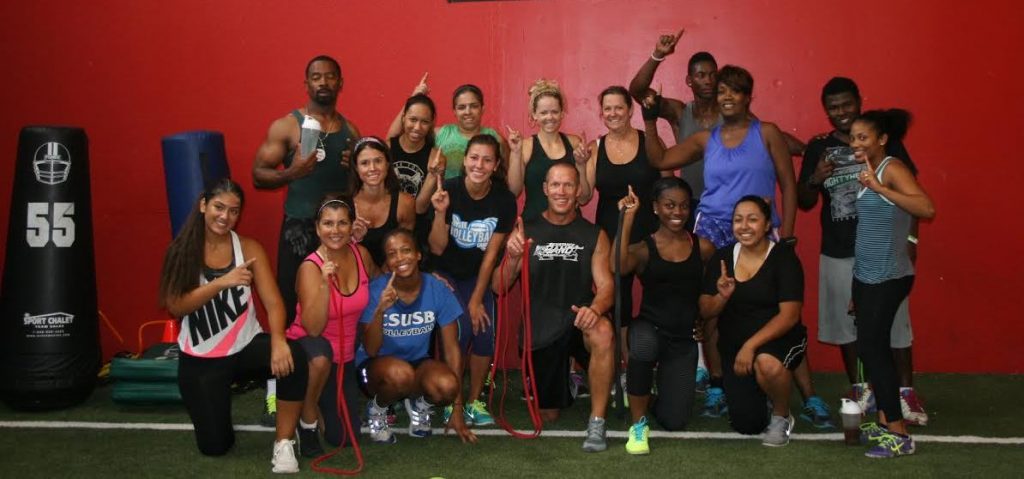When chest training is done incorrectly it can lead to long-term issues.
The chest is one of those muscle groups that when trained wrong can lead to long-term shoulder rotator cuff or cartilage issues. This is as a result of performing too much open-chain training versus closed-chain training. Open-chain refers to exercises where the hand is not firmly in contact with an immovable surface. Examples being, db flyes or barbell bench press variations.
In comparison, a closed-chain exercise would be a push up or standing attached band pushing. With closed-chain exercises the surface contact with the palm of the hand, in this case is the floor or the band, acts as an assist to the rotator cuff to provide shoulder stability.
Plus, with a push up the body is moving on the arm vs. the arm moving on the body which is the case with open-chain activities. Moving the body on the arm creates greater activation of the shoulder blade stabilizers. This also assists the rotator cuff to optimally stabilize the shoulder joint. Lastly, the abs will be more active in closed-chain exercises. Active abs result in a strong primary muscle contraction and recruitment.
Best Band Exercises for Absolute Chest Strength
Resisted push up variations, based on the information I just shared, are obviously the best way to train absolute chest strength using resistance bands. With various levels of band resistance, it makes it very easy to modify the resistance. Plus, with so many ways to vary a push up, it makes it easy to optimally hit all aspects of your chest.
Band Assisted Push up Variations
Great Chest Defining Auxiliary Exercises
The key to great muscle definition and avoiding nagging injuries to the shoulder is to make sure you train muscles in multiple patterns of movement using varying resistance and rep counts. The following are great auxiliary band chest exercises because they allow you to easily change up movement patterns and resistance on the fly.
Recommendations for Successful Long-Term Chest Development and Function
1. Pull equally or more with every chest workout
Pulling exercises like band rowing, pull a parts, pull ups and pull throughs keep the shoulder blade muscles strong and active while making sure chest muscles do not get tight and overdeveloped. Overdeveloped and tight chest muscles lead to rounded shoulders. This places the rotator cuff in a poor position to function effectively. As a result, the rotator cuff is put through repeated micro trauma on every pushing workout. Refer to Back Training for Success and Fitness Longevity to learn more back training tips.
2. Limit heavy free weight chest training workouts to once every 5 workouts
As the body ages the tendons of the rotator cuff become dry and less elastic. Placing them under continuous and frequent heavy dead-weight resistance will ultimately lead to straining or possible tearing of these tendons. It’s OK to place the rotator cuff under moderate dead-weight loads periodically; however, it is not necessary to do it frequently as the body ages to optimize results. A great way to train with weights but not place the rotator cuff at risk is through Band Contrast Training.
Chest Contrast Training Workout
3. Work on shoulder distraction flexibility before every upper body workout
Band distraction training not only helps keep the surrounding muscles of the shoulder flexible, but it also keeps the shoulder joint mobile. Shoulder distraction is the best way to stretch the rotator cuff muscles without placing the tendons in a position to get pinched. This is often the case when performing traditional shoulder stretching.
Shoulder Distraction Stretching
4. Keep shoulder stability as a key objective with all chest training
Perform closed-chain core stabilization exercises like push ups, planks, and crawling often. Make sure shoulder stabilization is a key part of pre-workout training, especially if heavy open-chain resistance training is planned for that workout. Doing pure closed-chain activities or band-related pushing early in the workout will activate key shoulder stabilizers that will be needed when upcoming open-chain, heavy resistance bench pressing training begins.
Bench Press Friendly RBT Exercise Ideas
5. Change things up often…higher reps, fast concentric training and single arm training are all great options
Working on light resistance, high reps, faster concentric pushing or single arm training with resistance bands will allow you to work on power, muscle definition, muscle endurance and core stabilization. These are all things that are often lost as the body ages and only open-chain, slow rep, free weight pushing is preformed. Changing things up is the key to long-term successful chest training.
Why Do Single Arm Pressing?
Want to Train Your Chest with RBT but unsure where to start??
Let Dave personally coach you on how to get great results with RBT
Learn More




